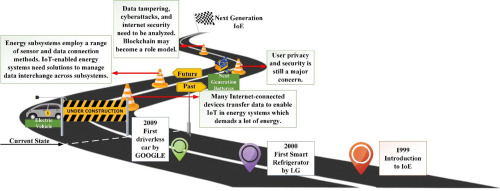
Scientists Create Hybrid Quantum Photonics Chip Facilitating Practical Quantum Communication
In a remarkable breakthrough poised to greatly enhance the deployment of quantum networks, researchers from the Rochester Institute of Technology and the University of Rochester have introduced an innovative hybrid quantum photonics platform. The findings, published on April 22, 2025, in Optica Quantum, present a system that merges traditional nonlinear optical crystals with advanced photonic integrated circuits (PICs) to produce and manage entangled photons at significantly varied wavelengths.
This advancement aims to tackle one of the primary obstacles in quantum communication: effectively connecting devices that function at visible-light frequencies with long-range fiber-optic networks tailored for infrared signals.
Connecting Quantum Realms with Light
At the heart of the new platform is a periodically poled potassium titanyl phosphate (PPKTP) crystal, recognized as a nonlinear optical material. The researchers have established a direct connection between this crystal and silicon-based PICs, facilitating the generation of entangled photon pairs—one in the visible spectrum (656 nm) and the other within the telecommunications band (1536 nm). This methodology allows diverse quantum technologies—such as ion traps or atomic clocks (which typically use visible light)—to interface with current telecommunications infrastructure optimized for extensive data transmission using infrared light.
“This system serves as a universal translator for distinct sectors of the quantum realm,” remarked one of the co-authors of the study. “It permits single photons traveling in visible light from one quantum apparatus to be entangled with photons in infrared light that can traverse fiber optic cables over long distances, while ensuring minimal signal loss.”
The researchers drew a parallel between the delicate vibrations of a star, which indicate its age and makeup—a method known as asteroseismology—and the behavior of photons, which can disclose the quantum state of systems they are coupled with. Utilizing these quantum features in a practical, compact format represents a significant advancement toward tangible quantum networks.
Advances for Practical Quantum Communication
Practical quantum technologies have consistently confronted multiple challenges, such as the necessity for cryogenic cooling, limited compatibility with contemporary communications frameworks, and notable signal degradation over distance. The hybrid system devised in this study addresses several of these issues:
– Compatibility with Room-Temperature Sensors:
By adjusting one of the entangled photons to visible light, the system allows detection utilizing room-temperature single-photon avalanche diodes (SPADs), removing the requirement for large and costly superconducting detectors.
– Integrated Noise Suppression:
The electro-optic PICs incorporate built-in pump suppression and signal filtering, substantially mitigating the influence of background noise without needing additional cumbersome filter equipment.
– On-Chip Quantum Management:
The PICs provide direct on-chip control of quantum states—including routing, modulation, and phase control—greatly enhancing system scalability and capabilities.
– Fiber Network Compatibility:
By linking a visible-light photon with a telecommunications-wavelength counterpart, the platform utilizes existing fiber-optic infrastructure designed for internet traffic, rendering quantum communications more achievable and economical.
Field-Tested on an Actual Quantum Network
To illustrate real-world functionality, the researchers transmitted quantum signals through RoQNET (Rochester Quantum Network), a 38-kilometer optical fiber network connecting the RIT and University of Rochester campuses. Despite notable signal loss throughout the fiber distance, the system preserved quantum correlations between the photon pairs—an essential criterion for quantum cryptography and networked quantum computing.
Experiments demonstrated strong interaction between the components, with insertion losses recorded at 2.37 ± 1.03 dB for visible light and 4.46 ± 1.32 dB at telecom wavelengths. Moreover, their silicon waveguides achieved 92.5 ± 2.5 dB pump suppression—significantly outperforming most traditional filtering technologies and exhibiting less signal degradation.
Towards the Future of Quantum Networks
This hybrid photonic-crystal approach is considered a crucial milestone toward scalable, deployable quantum networks. The team foresees its potential applications across various fields, including:
– Secure Quantum Key Distribution (QKD), guaranteeing invulnerable encryption protocols.
– Distributed quantum computing where entangled quantum processors share information across urban areas.
– Quantum-enhanced sensing in domains such as healthcare and environmental observation.
Additionally, the adaptability of the platform may enable integration with a wide array of quantum emitters and detectors, including color centers in diamonds, semiconductor quantum dots, and trapped atoms or ions.
Funding, Collaboration, and Next Steps
The initiative was backed by the Air Force Research Laboratory and included vital contributions from industry partners like AdvR Inc. and AIM Photonics. The research team is currently concentrating on packaging their components into durable modules that can withstand environmental variations and investigating new nonlinear materials to broaden the platform’s wavelength compatibility and efficiency.
“By merging the strengths of traditional photonics with emerging quantum technologies, we’ve laid the foundation for quantum applications that are not merely theoretically viable—but practically implementable,” concluded the research team in a joint statement.
The new platform not only advances quantum physics